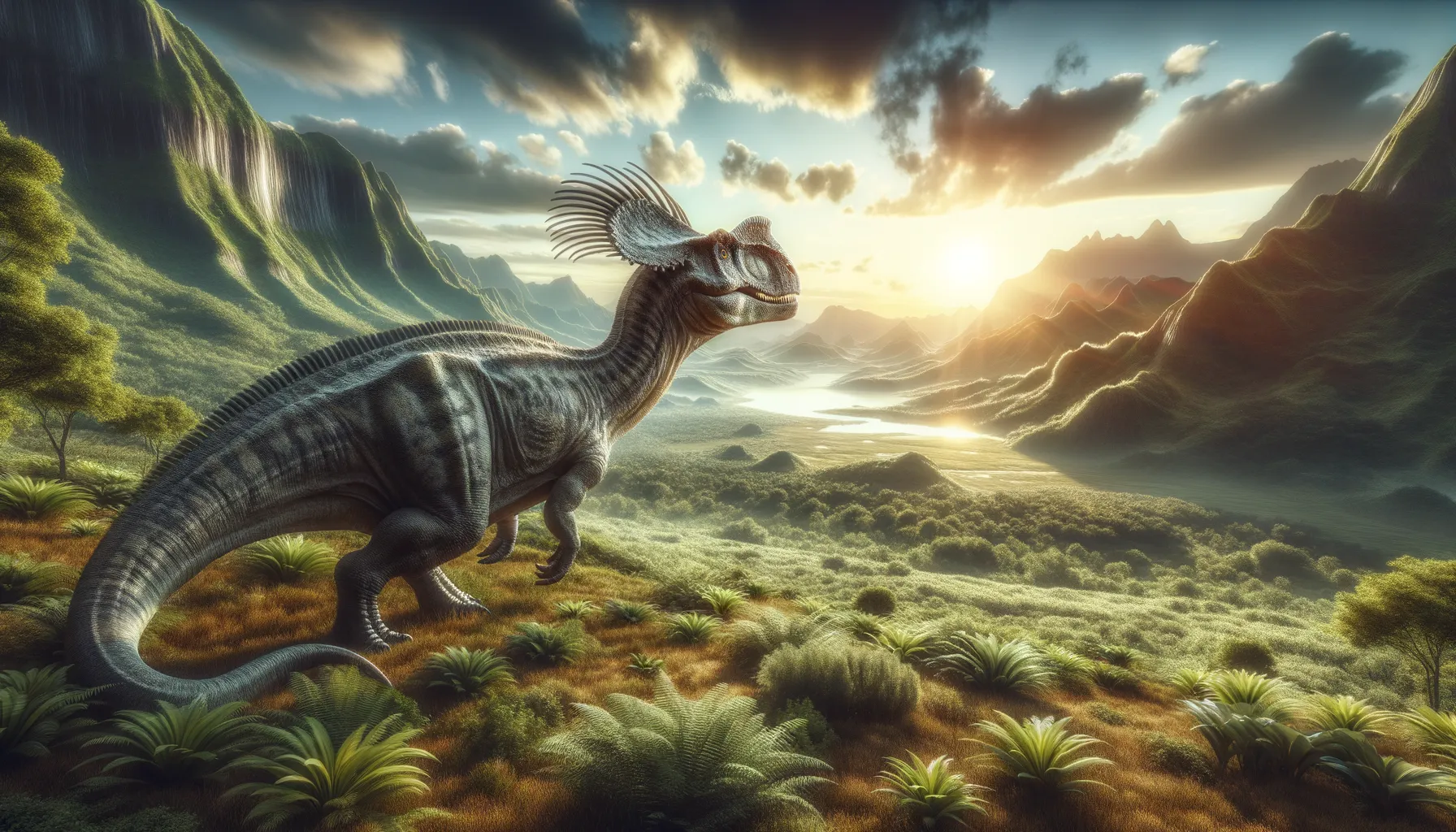
Hypacrosaurus
Crested herbivore of the Cretaceous.
Period
Cretaceous
Length
Approximately 9 meters long.
Height
Up to 4 meters tall.
Weight
About 3 to 4 tonnes.
Hypacrosaurus was a large herbivorous dinosaur known for its crested head and lived during the Late Cretaceous period. It belonged to the hadrosaur family, often referred to as 'duck-billed' dinosaurs, and was characterized by its flattened snout. Its fossils have been found in North America, particularly in Canada and the United States, highlighting the dinosaur's extensive range during its time.
Diet
Hypacrosaurus was a herbivore, feeding mainly on plant material available during the Cretaceous period. Its diet likely consisted of conifers, cycads, and ferns, using its beak to strip foliage.
Hunting
As a herbivore, Hypacrosaurus didn't hunt for meat. Instead, it foraged extensively for plants, using its keen sense of smell to locate food. It played a crucial role in its ecosystem as a primary consumer.
Environmental challenges
Hypacrosaurus faced environmental challenges like shifting climates and the threat of predators. Its large size may have been an advantage, deterring smaller predators. However, it needed to navigate changes in vegetation and landscape due to environmental shifts.
Speed
Moderate, likely moved at a steady pace.
Lifespan
Estimated to live around 20 to 30 years.
First discovery
Discovered in 1913 in Alberta, Canada.
Fun Facts
- Hypacrosaurus was a duck-billed dinosaur that lived about 75 million years ago.
- It had a large crest on its head, which may have been used for communication or display.
- This dinosaur was a herbivore, meaning it only ate plants.
- Hypacrosaurus could grow up to 30 feet long, making it one of the larger duck-billed dinosaurs.
- Fossils of Hypacrosaurus have been found in North America, particularly in Canada and the United States.
- It walked on both two legs and four legs, depending on its speed and the need to reach for food.
- Hypacrosaurus is known for its fast growth, similar to modern birds, reaching adulthood in just a few years.
Growth and Development
Hypacrosaurus exhibited rapid growth, particularly in the juvenile stage, to quickly attain a size less vulnerable to predators. This accelerated growth required a consistent food supply to sustain energy levels. Evidence suggests it reached adulthood within a few years, allowing it to reproduce quickly.
Habitat
It inhabited lush, forested regions with plenty of plant life. The environment was rich in resources, contributing to the diverse ecological community of the Cretaceous. These areas provided Hypacrosaurus with ample food and ideal conditions for nesting and rearing young.
Interaction with other species
Hypacrosaurus lived alongside other dinosaurs and shared its habitat with various herbivores and carnivores. Its social behavior likely involved living in large herds, offering protection from predators. Interactions included competition for food and space with other herbivorous species.
Natural lifespan
In natural conditions, it likely lived 20 to 30 years.
Reproduction
Hypacrosaurus reproduced by laying eggs in nests constructed from vegetation. These nests were often shared in colony-like settings, providing protection in numbers. Parental care was likely present, with adults overseeing and tending to hatchlings.
Social behaviour
Hypacrosaurus was likely a social animal, living in groups or herds. Such behavior provided protection and improved foraging efficiency. Communication among individuals might have included visual signals, aided by their crests, and vocalizations.
Fossil locations
Fossils of Hypacrosaurus have been predominantly found in Alberta, Canada, specifically in the Horseshoe Canyon Formation. Additional findings have come from the Two Medicine Formation in Montana, USA. These locations provide critical insights into its distribution and environmental preferences.
